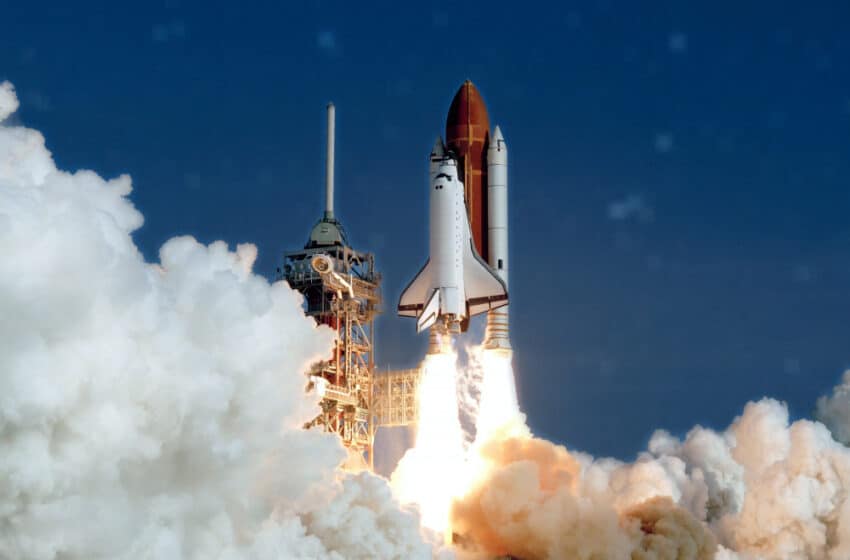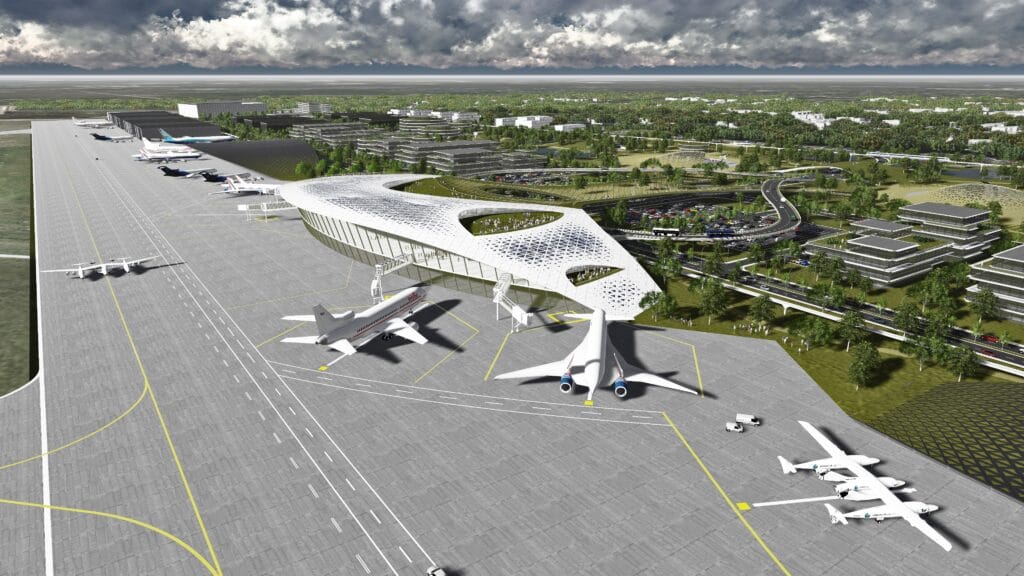Blast Off! Texas Surges Ahead in the New Space Race

Space has captivated the imagination of humankind since history began. Early societies tracked planetary movement and oriented buildings and other structures accordingly, navigators relied on the stars to make their way across oceans, and myths were written around constellations. As space travel became a realistic possibility, a “space race” developed during the Cold War era, with the United States pitted against Russia to be the first to achieve milestones such as orbiting the earth and landing on the moon.
Americans were glued to television screens in July 1969 as Neil Armstrong became the first human to step on the moon, and every previous and subsequent milestone has been the subject of intense interest among people in all walks of life. Texas was an integral part of this phenomenon, and it left an indelible imprint on the culture and personality of the state. The Houston Astros, whose name was changed from the Colt 45s just as space travel began, are an ongoing reminder of this linkage, and “Houston, we have a problem!” is now a part of our vernacular. For those of my generation, it was an all-consuming passion.
In the past, activity related to space was largely confined to the public sector, with the federal government supporting all research and development and operations. This basic research enabled development of key knowledge, technologies, and materials, and the industry has reached a point where it is feasible for private firms to be more fully involved in the entire spectrum of space-related operations. The race has changed, with public-private partnerships and an expanded range of possibilities generating massive investments and new developments.
The Space Economy
The “Space Economy” spans elements of many industrial sectors, with major components including the manufacture of space vehicles, propulsion systems, satellites, communication systems, navigation and guidance equipment, and associated parts. It further includes satellite communication, the transportation of people and cargo, and extensive technological research and development by scientists and engineers.
The Space Economy in the United States currently supports almost 350,000 direct jobs, with spillover effects permeating the entire spectrum of business activity. The Perryman Group estimates that when multiplier effects are considered, the current annual impact of the Space Economy on US business activity includes over $204.0 billion in annual gross product and 1.7 million jobs.
Texas’ Role
As noted, Texas has long had a presence in space-related industries. For more than 60 years, the Lyndon B. Johnson Space Center (JSC) has been engaged in key missions for the National Aeronautics and Space Administration (NASA). JSC is the site of mission control and astronaut training, as well as numerous other initiatives. Some 11,000 people work at the 1,620-acre complex near Houston, and the related museum draws over a million visitors per year (including 33 percent from other states and 33 percent from other countries).
Private-sector firms are also expanding space operations, with a significant presence in Texas. These companies are investing not only in the largest metropolitan areas, but also in small communities around the state. They are developing capabilities across a spectrum of businesses including cargo, transport, and satellite.
SpaceX, founded by Elon Musk, designs, manufactures, tests, and launches satellites and spacecraft for orbit and cargo transport and has been awarded contracts by NASA for development of a lunar lander and other components. For more than a decade, it has been operating a rocket development facility in McGregor, and has recently been expanding that facility to include a $150 million factory for its Raptor 2 rocket engines. Other SpaceX operations in the state include a commercial rocket launch site in Boca Chica Beach.
Blue Origin, founded by Jeff Bezos, is focused on systems for human spaceflight including space tourism. The company’s facility near Van Horn is used for flight testing and launches. Blue Origin is also involved in partnerships with NASA and has begun space tourism flights.
Among other companies operating in Texas, XCOR Aerospace designs and produces reusable launch vehicles, rocket engines and rocket propulsion systems in Midland. Boeing, which has long had operations in the state, is also working on various systems for NASA.
Midland International Airport became the first airport in the nation to also be issued a commercial spaceport license by the FAA. Now known as the Midland International Air and Space Port, a variety of related businesses are developing in the area. The Houston Spaceport has also been approved by the FAA and work is underway, with a variety of firms planning locations in the area. These are only a few of the companies and developments across the state.
Economic Benefits and the Future Outlook
Texas presently is home to about 6.75 percent of US Space Economy jobs. Although this percentage is less than the state’s share of overall jobs in the economy (which is about 8.5 percent), the state’s importance in the arena has been expanding markedly of late. High profile activities and underlying investments are notably accelerating the pace of development.
The Perryman Group estimates that the current impact of the Space Economy on Texas includes an estimated $11.7 billion in annual gross product and over 102,000 jobs (including multiplier effects). Many of these jobs are concentrated in high value-added manufacturing industries which, in turn, can serve as a catalyst for further development over time.

Space-related industries are expected to see substantial growth in the future, driven by their ability to enhance security, communications, and other aspects of the economy and society. The Perryman Group estimates that the Space Economy in the United States (as measured by gross product) will likely expand its output (gross product) by approximately 120 to 200 percent by 2040, potentially becoming three times its current size. In Texas, the Space Economy is expected to expand about 120 percent faster than in the nation, raising its share of the US total to almost 15 percent.
Based on current major industry forecasts, The Perryman Group estimates that by 2030, the total impact of the Space Economy on US business activity could rise to between $298.0 billion and $344.7 billion in annual gross product and 2.2–2.5 million jobs including multiplier effects (depending on whether the lower bound or median of the forecasts is assumed). For Texas, the Space Economy and related spillover effects generate a projected $23.6 billion to $27.3 billion in annual gross product and between about 175,300 and 202,700 jobs as of 2030. By 2040, impacts rise substantially, supporting up to 3.3 million US jobs and nearly 433,500 Texas jobs (including multiplier effects).
Conclusion
The Space Economy is a substantial and growing source of business activity. It is also essential to security, communications, and solutions to major problems such as climate change and resource limitations. In addition, the research and development it involves generates new discoveries which enhance daily life and wellbeing. Texas already plays an important role in space exploration and related industries. With a major public-sector presence, large and growing private-sector initiatives, and aggressive development efforts, the state is likely to significantly increase its share of the Space Economy. This growth will help to further solidify Texas as a major global technology hub and assure that, for decades to come, “Houston, we do not have a problem!”


